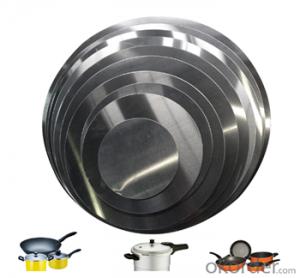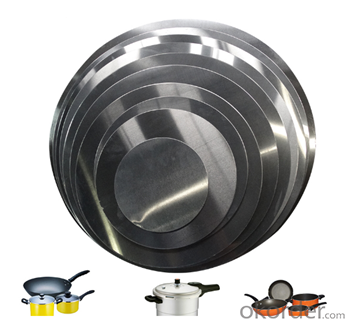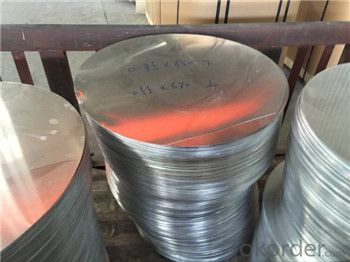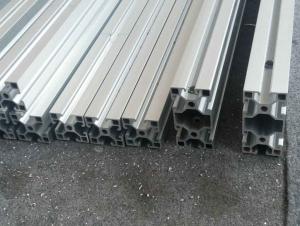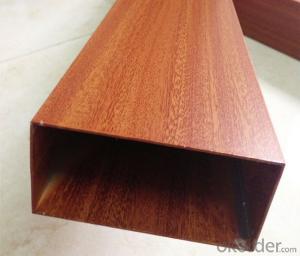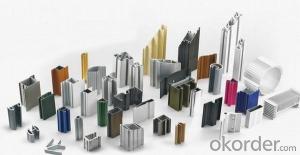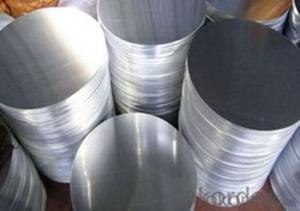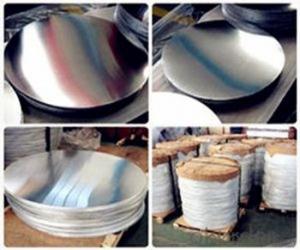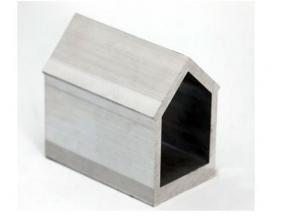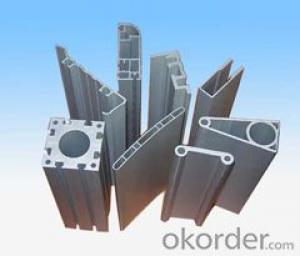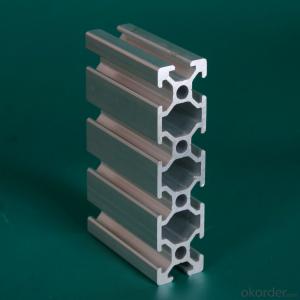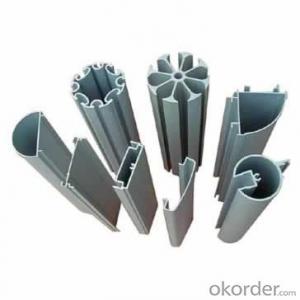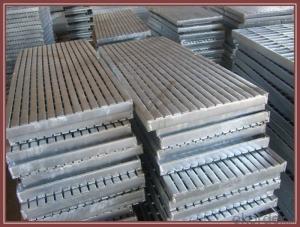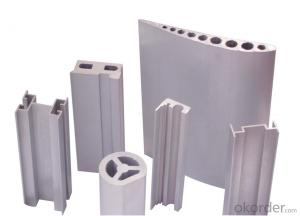Structural Aluminum Extrusion Profiles for High Quality Aluminum Disc Cookware at Great Prices
- Loading Port:
- Qingdao
- Payment Terms:
- TT OR LC
- Min Order Qty:
- 10000 kg
- Supply Capability:
- 100000 kg/month
OKorder Service Pledge
OKorder Financial Service
You Might Also Like
Specification
Aluminum Disc for Cookware
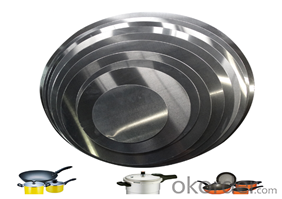
Aluminum Disc for Cookware Description
Aluminum disc is mainly used in making cookware, like non-stick pan, pressure cooker, hardware and pressure cooker and so on. Aluminum circle disc is the most widely used deep drawing products, High tensile strength, good ductility, Anodized quality and deep drawing quality which is suitable for cookware as well.
Aluminum Disc for Cookware Specifications
1.Alloy: 1100, 1050, 1060, 1070, 3003
2. Temper: O, H12, H14 aluminum round plate 1050
3. Thickness: 0.36mm ~ 5mm
4. Diameter: 120mm - 1000mm
Aluminum Disc for Cookware Picture
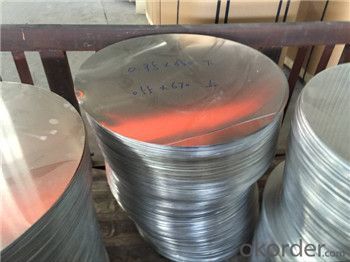
Aluminum Disc for Cookware Features
1. Excellent elongation and tensile strength;
2. Processing performance is good, stamping, stretch forming high performance;
3. Gas welding, hydrogen welding, resistance welding and brazing;
4. High plasticity, conductivity and thermal conductivity;
5. Easy to take all kinds of pressure processing and extension, bending.
Aluminum Disc for Cookware production process
In production,we must handle every link,every detail,and every work properly to ensure a high level of product quality.Therefore,Weihua creater s complete set of process,from aluminum smelting,to casting,cutting,heating and other linkes to track,control and guide the to do high-quality goods.
Introduction of our company
Our company is a professional Aluminium Strip manufacturer and Aluminum Circles manufacturers,mainly supply Aluminium Coil,Aluminum Circles,Aluminium discs,Aluminum Sheet,Aluminum Strip, Household Aluminum Foil,Aluminum Foil for Pharmaceutical Packaging,Aluminum Foil Tape,Aluminum Foil for Air Conditioner,Aluminum Foil for Container etc. series of aluminum products, sincerely welcome everyone to visit.
- Q: This question asks if aluminum profiles can be used in outdoor settings and seeks an explanation for their suitability.
- <p>Yes, aluminum profiles can be used for outdoor applications. They are suitable for outdoor use due to their high resistance to corrosion, which is a result of the natural oxide layer that forms on aluminum when exposed to air. This layer protects the aluminum from further oxidation and damage. Additionally, aluminum profiles are lightweight, strong, and can withstand various weather conditions, making them ideal for applications such as outdoor furniture, construction, and signage. Their durability and low maintenance requirements also contribute to their popularity in outdoor settings.</p>
- Q: What's the price of aluminum alloy die castings and aluminum profiles?
- Should be the alloy now out of the alloy, like domestic red flag, automobile, plastic steel, now the price is good!
- Q: Are aluminum profiles suitable for use in the electronics industry?
- Yes, aluminum profiles are suitable for use in the electronics industry. Aluminum is lightweight, corrosion-resistant, and has excellent thermal conductivity, making it ideal for applications such as heat sinks, enclosures, and frames in electronic devices. Additionally, aluminum profiles can be easily customized and are cost-effective, making them a popular choice in the electronics industry.
- Q: The aluminum panel is the cart, ordinary nylon plate, the wheel is not conductive wheel, why use aluminum surface will be static, but not in the nylon plate, not easy to produce electrostatic in high resistance material?
- To protect its surface finish!These thin film aluminum surface coverage of excellent conductivity and it is insulated! Then in normal environment and similar objects formed aluminum will static capacitance effect! This principle is that it can form the electrostatic charge accumulation!
- Q: How do you calculate the weight-bearing capacity of aluminum profiles?
- When determining the weight-bearing capacity of aluminum profiles, several factors must be taken into account. These include the profile dimensions, the grade of aluminum used, and the specific requirements of the application. To start, it is necessary to ascertain the dimensions of the aluminum profile, including its length, width, and thickness. These measurements are crucial for calculating the cross-sectional area, a key parameter in determining the profile's load-bearing capacity. Next, the material grade of the aluminum used must be considered. Different aluminum alloys possess varying strength properties, so it is essential to know the specific alloy and temper designation. This information can be obtained from the manufacturer or supplier. Once the cross-sectional area and material grade are known, engineering standards or handbooks can be consulted. These resources provide load tables or formulas for calculating the safe load capacity of aluminum profiles. They offer a range of load ratings based on different loading conditions, such as static or dynamic loads, as well as factors like span length, support conditions, and safety factors. It is also crucial to take into account any additional factors that might affect the load-bearing capacity. These could include temperature, vibration, or potential impact forces. Adjustments to the calculated load capacity might be necessary to accommodate these factors. Furthermore, seeking advice from a structural engineer or an aluminum profile manufacturer can be highly beneficial. They can provide valuable insights and recommendations for more accurate calculations. They may possess specialized knowledge or testing data specific to the aluminum profile being considered, ensuring a more reliable assessment. In conclusion, calculating the weight-bearing capacity of aluminum profiles involves considering the dimensions, material grade, and specific application requirements. Consulting relevant resources or experts in the field is necessary to ensure accurate and safe load calculations.
- Q: Are aluminum profiles recyclable at the end of their useful life?
- <p>Yes, aluminum profiles can be recycled at the end of their lifespan. Aluminum is one of the most recycled materials in the world due to its durability and the energy efficiency of recycling it. The recycling process involves melting the aluminum, which requires significantly less energy than producing aluminum from raw materials. This makes recycling aluminum profiles not only environmentally friendly but also economically viable. The recycled aluminum can be used to produce new aluminum products, contributing to a circular economy.</p>
- Q: What are the reasons for the large number of products in the aluminum profile cutting machine after opening?
- When sawing, lubrication is insufficient, check the lubrication system, and the other may be aluminum material is not good
- Q: Can aluminum profiles be used for shelving systems?
- Certainly, shelving systems can indeed utilize aluminum profiles. Renowned for their robustness, longevity, and adaptability, aluminum profiles prove to be an excellent selection for a wide range of uses, including shelving systems. One can effortlessly tailor and manufacture them to suit particular measurements and specifications, enabling the creation of shelving systems in various sizes and designs. Furthermore, owing to its lightweight yet sturdy nature, aluminum permits straightforward installation and upkeep. Additionally, it exhibits resistance against rust and corrosion, rendering it suitable for indoor as well as outdoor shelving systems. On the whole, aluminum profiles present a dependable and effective solution for shelving systems.
- Q: Can aluminum profiles be used in load-bearing structures?
- Yes, aluminum profiles can be used in load-bearing structures. Aluminum is a lightweight and highly durable material that possesses excellent strength-to-weight ratio, making it suitable for various load-bearing applications. The profiles can be designed and manufactured to handle substantial loads, making them ideal for use in structures such as bridges, buildings, and industrial frameworks. Moreover, aluminum profiles have corrosion-resistant properties, which further enhances their suitability for load-bearing structures in various environments. However, it is essential to consider the specific design requirements, load conditions, and proper engineering calculations to ensure the aluminum profiles are appropriately sized and reinforced for the intended load-bearing purposes.
- Q: What are the weight capacities of aluminum profiles for shelving systems?
- The weight capacities of aluminum profiles for shelving systems can differ based on a variety of factors, including the profiles' dimensions, the shelving system's design, and the quality of the aluminum used. In general, aluminum profiles used for shelving systems can handle a substantial amount of weight. Nevertheless, it is important to acknowledge that the weight capacity of a shelving system also relies on other components like brackets, connectors, and the type of shelving material (e.g., wood, glass, or metal shelves) used. To obtain accurate weight capacity information, it is advisable to consult the manufacturer or supplier of the specific aluminum profile and shelving system. They can offer guidelines derived from their product specifications, engineering calculations, and testing. Additionally, proper installation, weight distribution, and regular maintenance are also vital factors in ensuring the overall strength and stability of a shelving system.
Send your message to us
Structural Aluminum Extrusion Profiles for High Quality Aluminum Disc Cookware at Great Prices
- Loading Port:
- Qingdao
- Payment Terms:
- TT OR LC
- Min Order Qty:
- 10000 kg
- Supply Capability:
- 100000 kg/month
OKorder Service Pledge
OKorder Financial Service
Similar products
Hot products
Hot Searches
Related keywords
